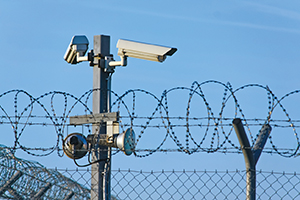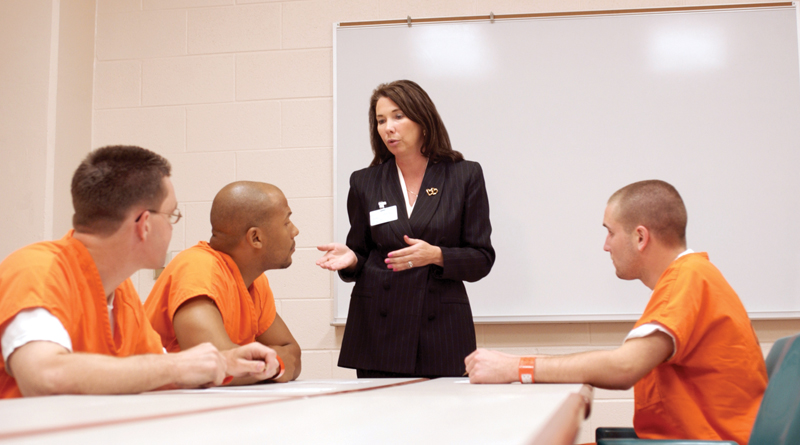A Look at the Future of “Smart” Correctional Facilities
By Phillip Lowery
Government facilities are expected to run efficiently while providing citizens a safe, sustainable and comfortable environment. The same holds true for correctional facilities, with the additional need to supply adequate housing, dining, recreational activities and healthcare for its residents. Today, many correctional facilities are faced with infrastructure issues and limited funding, making it difficult to provide these needs for inmates and officers. Correctional facilities must look toward innovative funding opportunities and new technologies to help them accomplish their goals of reducing criminal activity while creating a safe and sustainable setting.
The Current State of Correctional Facilities
Crumbling infrastructure, deferred maintenance and rising utility bills take a toll on correctional facilities. With the population only increasing, these issues continue to demand a larger share of tax dollars. However, state leaders are left with little available funding to not only address the issues, but to improve infrastructure for better operational efficiency in the future.
Security at correctional facilities differs from security at other government buildings as measures are used to keep people in, not out. For this reason, it is important to create and maintain a safe and comfortable facility and to minimize outside environmental factors, which could ultimately impact the morale of offenders and lead to increased security concerns. Many overlook comfort as a necessity for correctional facilities, but with inmates sleeping, eating and living on the grounds, creating a performance infrastructure that enables a comfortable environment directly correlates to the safety of both inmates and officers at the facility.
In today’s technology-driven world, there are products and services available that can work seamlessly with one another to create a more sustainable correctional facility. It’s imperative for corrections leaders to research creative funding options in order to provide smarter, safer and more comfortable solutions.
Tactics to Address Funding Restraints
Corrections administrators aim to reduce energy costs, address ongoing maintenance needs and improve infrastructure without added budget or funding — which can often seem like an impossible feat for a government facility. To achieve this outcome, it’s important for correctional facilities to seek innovative funding options at the planning and budget phase.

Photo Credit (all): Johnson Controls
Some correctional facilities have developed vocational programs for inmates to participate in to help gain employment upon their release and help reduce recidivism. These vocational programs help facilities minimize overpopulation and juggle rising costs of housing inmates. The programs can also be mutually beneficial for the state. With inmates eventually applying skills learned through a vocational program in the workforce, the state gains support for initiatives that otherwise might have been put on hold.
For example, there is currently a nationwide skilled labor shortage in areas such as HVACR. To take advantage of the opportunity in the workforce, some correctional facilities have designed a HVACR vocational program. The program is offered to inmates who are expected to be released within a few years, so they can learn the skills needed to pursue a job in HVACR upon their release. These facilities have created labs and outfitted them with HVACR equipment, desks, white boards and instructors, making them look much like modern learning labs that can be found in today’s classrooms.
Inmates who have completed such programs have seen success in obtaining jobs, ultimately positively impacting recidivism rates and housing costs.
In addition to providing vocational programs for inmates, implementing more efficient energy and security solutions to become a “smart” correctional facility can help create a better balance between safe, smart and comfortable, and ensure both inmates and correctional officers’ needs are met.
The “Smart” Future of Corrections
When deciding on what technologies will hold the most value to correctional facilities, it’s crucial to remember the reason these facilities exist — to control criminal activity. When researching new technologies, first and foremost, corrections leaders should evaluate available solutions that will help them reach their goal.
Technology advancements in lighting and fencing provide correctional facilities the necessary solutions for operational efficiency. Both technologies help to keep inmates within the perimeter and benefit officers who are responsible for securing that perimeter. Illegal cell phone and drone usage are new boundary lines requiring monitoring that correctional facilities have only recently started to encounter. In both situations, there is an elevated risk that inmates are directing criminal activity from within the facility through these devices. The lighting and fencing innovations can be paired with technology that can detect illegal usage of both devices, such as pinpointing where illegal phone calls are happening while simultaneously recording the phone calls. For drone detection, a radar is placed around the facility that enables officers to track down the operator, who is commonly an outsider because oftentimes the drone is being used to deliver contraband to inmates. Both technologies can help minimize criminal activity within a correctional facility, though more is needed to ensure safety.
Standard security measures — cameras, access control and communications — are still necessities for correctional facilities and provide a foundation on which to build upon. These functionalities are imperative for ongoing daily operations and occupant safety. In today’s technology-driven world, there are now ways to take these security measures one step further and integrate them with other systems like heating and cooling, equipment, lighting and plumbing. The integration of these different systems allow a building to become “smart” and more sustainable. Not to mention, implementing a comprehensive approach to security and technology can ultimately lead to cost savings and improved infrastructure, which is critical to correctional facilities.
Through integrated technologies, correctional facilities can keep pace with the “smart” future that many government facilities are working toward. Correctional facilities can operate more efficiently when there is a cohesive strategy to reducing criminal activity, improving infrastructure and creating an overall more comfortable environment for inmates and employees.
To read the entire article, check out the November/December issue of Correctional News.
Phillip Lowery is the vertical market director for State Government at Johnson Controls, a Milwaukee-headquartered provider of building equipment, controls and services.

